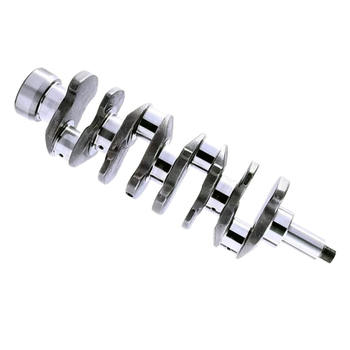Understanding Crankshaft Stress and Its Importance
Crankshafts are critical components in any internal combustion engine, converting linear piston motion into rotary motion to drive the vehicle's wheels. However, crankshafts are subject to immense stress due to the high forces generated during engine operation. As a result, crankshaft failures can lead to catastrophic engine damage and costly repairs.
The Role of Stress Analysis in Preventing Failures
Stress analysis is a crucial aspect of crankshaft design and maintenance, as it helps engineers identify potential weak points and assess the likelihood of failure under various operating conditions. By accurately predicting stress levels, engineers can optimize crankshaft designs for improved durability and performance.
Modern Tools and Techniques for Crankshaft Stress Analysis
In recent years, advances in technology have made it possible to perform increasingly sophisticated stress analyses on crankshafts. Some of the most popular tools and techniques include:
Practical Applications: Improving Engine Performance and Reliability
Here are some actionable tips for leveraging stress analysis technology to optimize crankshaft design and maintenance:
- Consult with experienced engineers and utilize advanced FEA software to simulate stress levels under various operating conditions, ensuring your crankshaft design is optimized for durability and performance.
- Incorporate strain gauge testing into your engine development process to validate FEA models and gather real-world data on stress concentrations, enabling more accurate design iterations.
- Investigate the use of high-strength materials like advanced steel alloys or composites in your crankshaft design, as they can provide significant improvements in strength and weight reduction, ultimately leading to increased engine reliability and performance.
The Future of Crankshaft Stress Analysis
As technology continues to evolve, we can expect even more advanced tools and techniques for crankshaft stress analysis, enabling engineers to develop increasingly efficient and reliable engines. Some promising areas of research include the integration of artificial intelligence and machine learning algorithms to improve FEA model accuracy and the use of additive manufacturing (3D printing) to produce complex, lightweight crankshaft designs.
In Conclusion: Embracing Innovation for Improved Engine Performance
By harnessing the power of modern stress analysis technology, engineers can design and maintain crankshafts that deliver exceptional performance and reliability. As a responsible vehicle owner or fleet manager, staying informed about the latest advancements in crankshaft stress analysis can help you make informed decisions about engine maintenance, repairs, and upgrades. So, take the time to explore these innovative tools and techniques, and reap the benefits of improved engine performance and reduced downtime.




